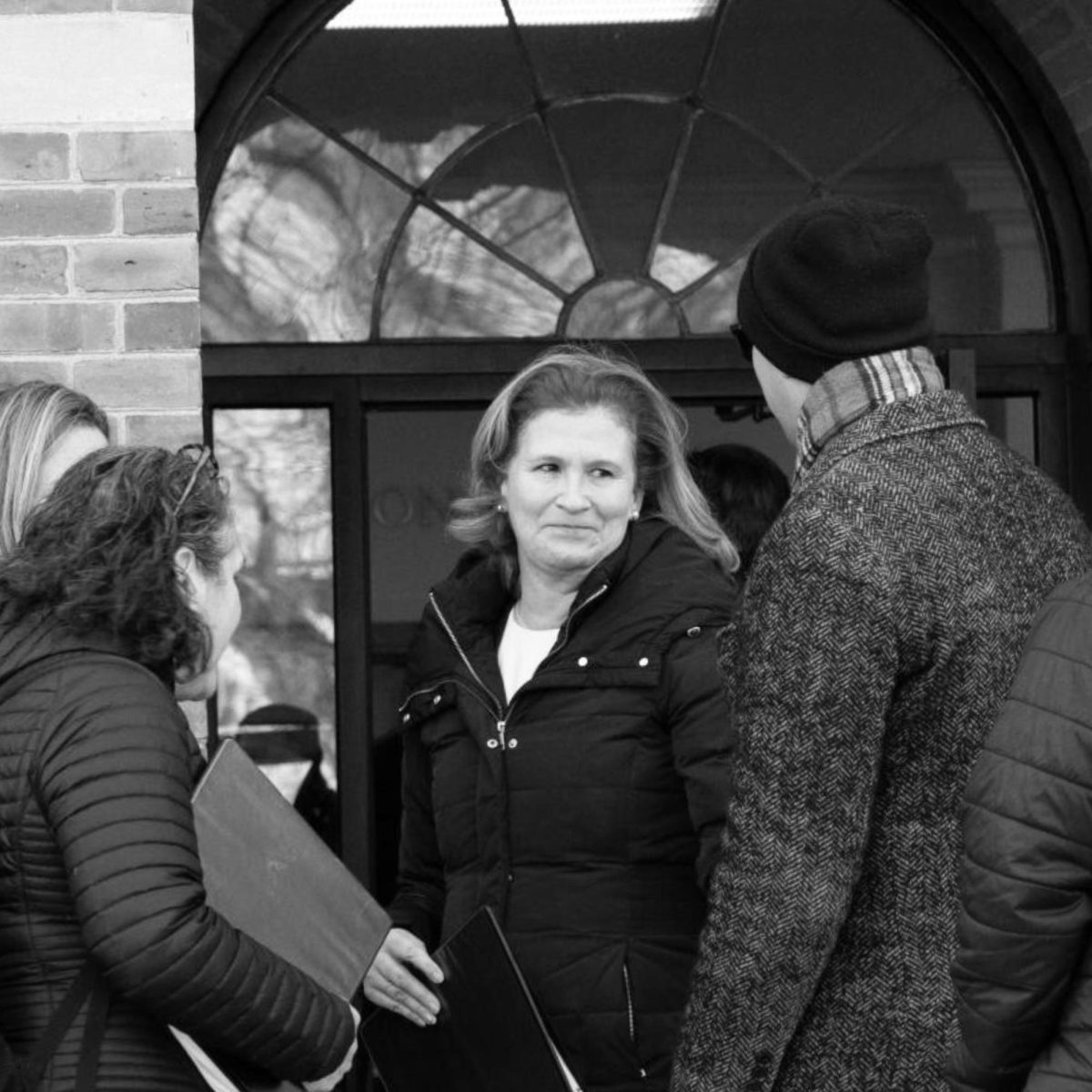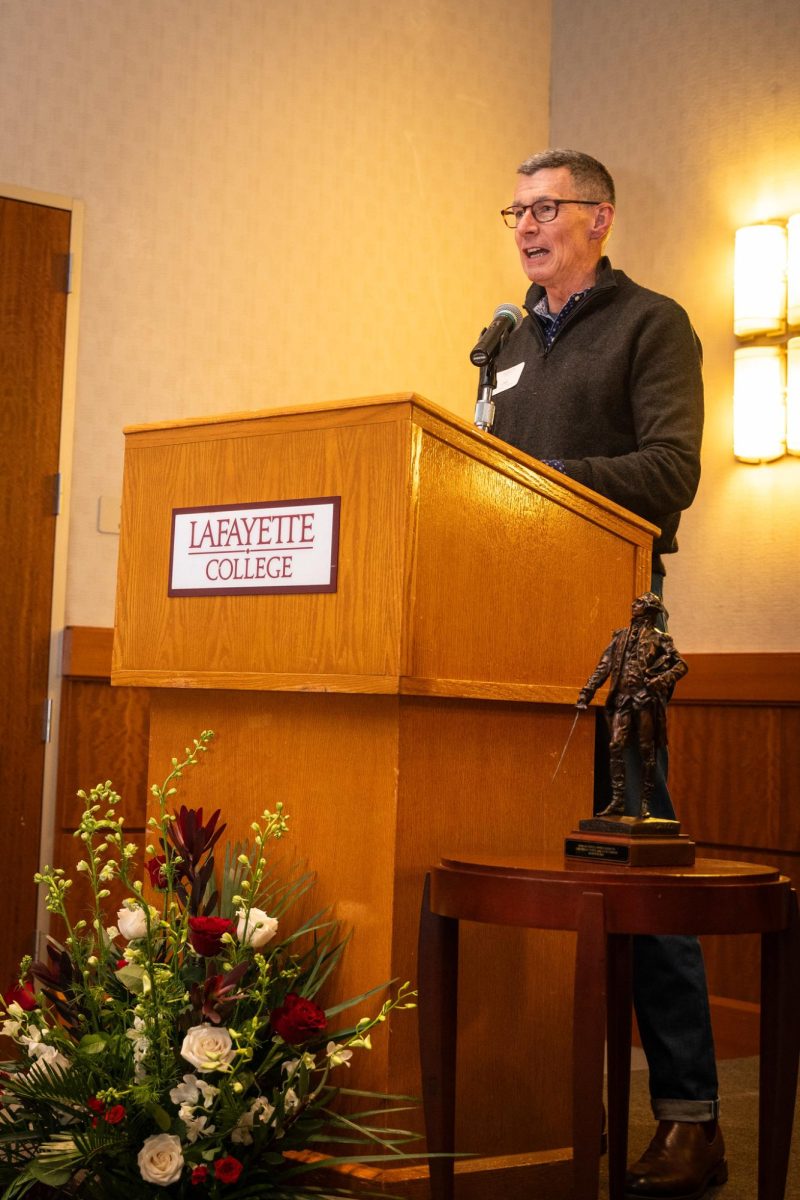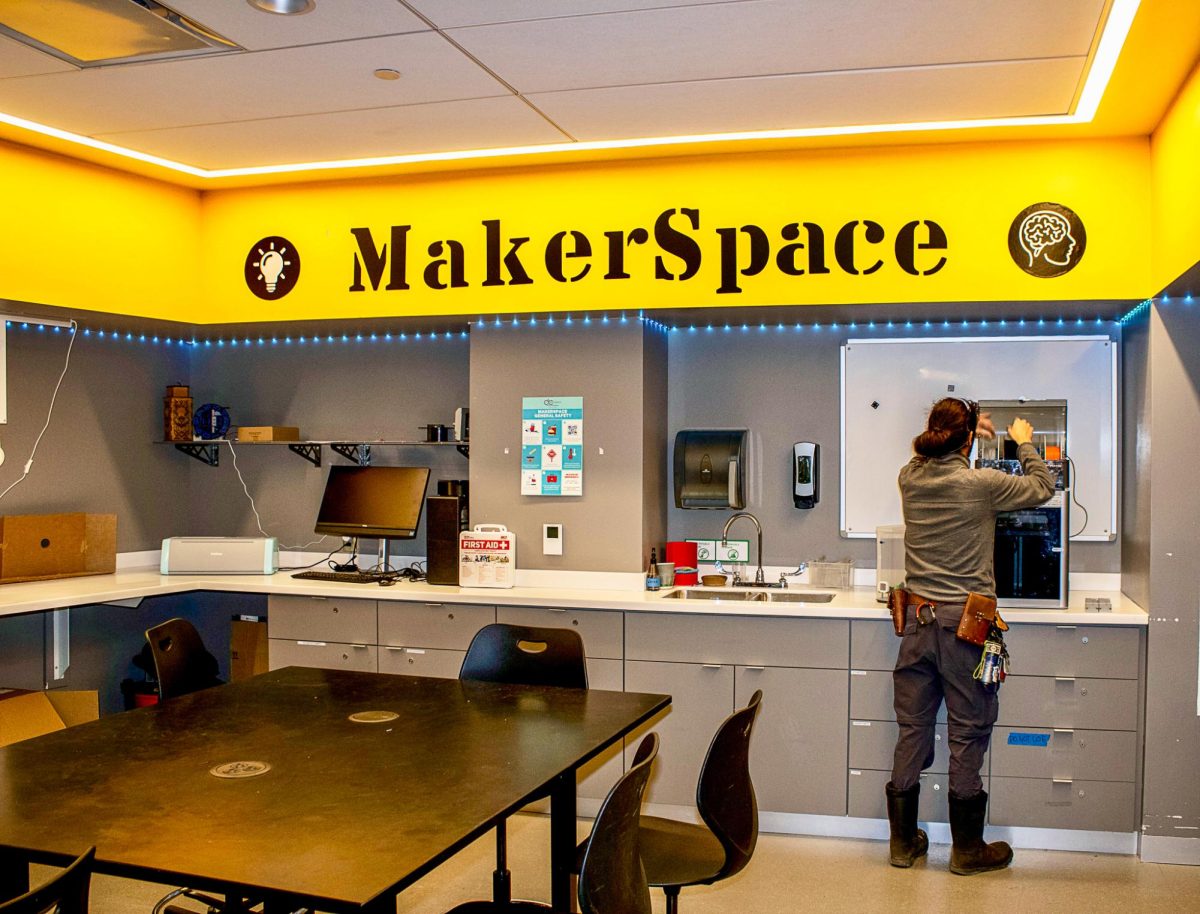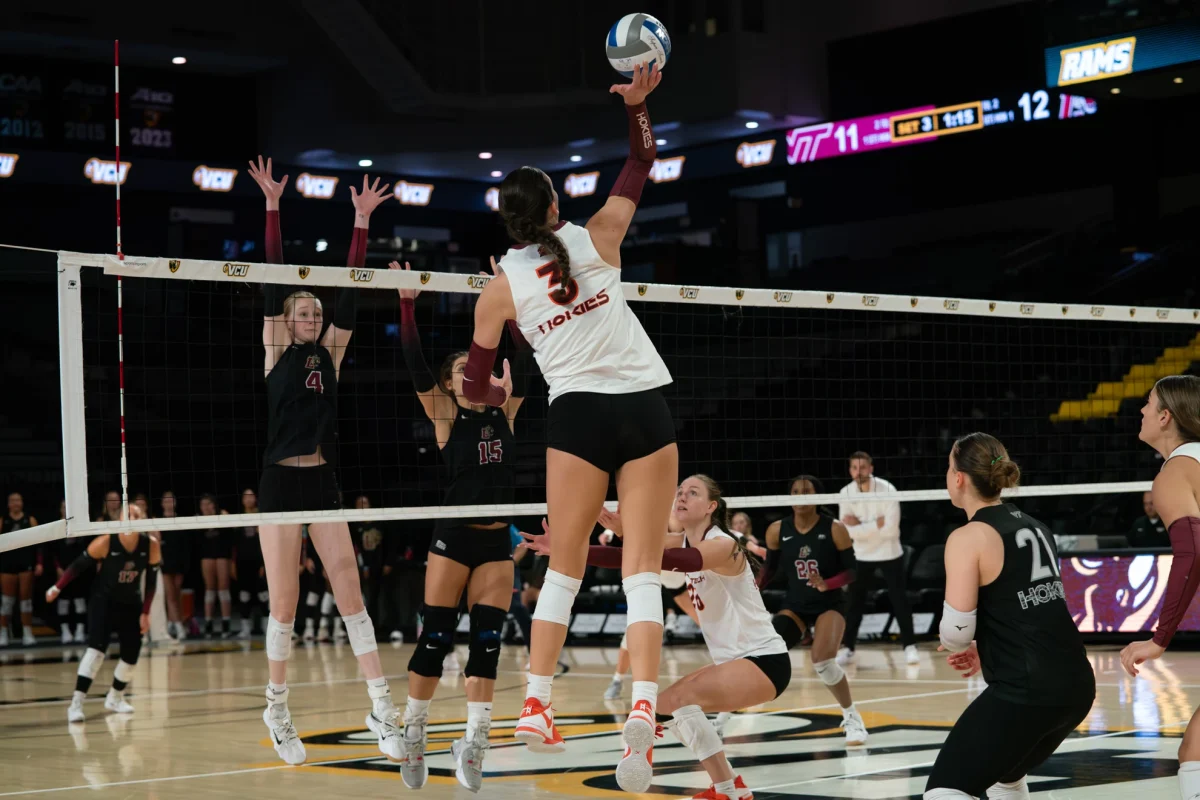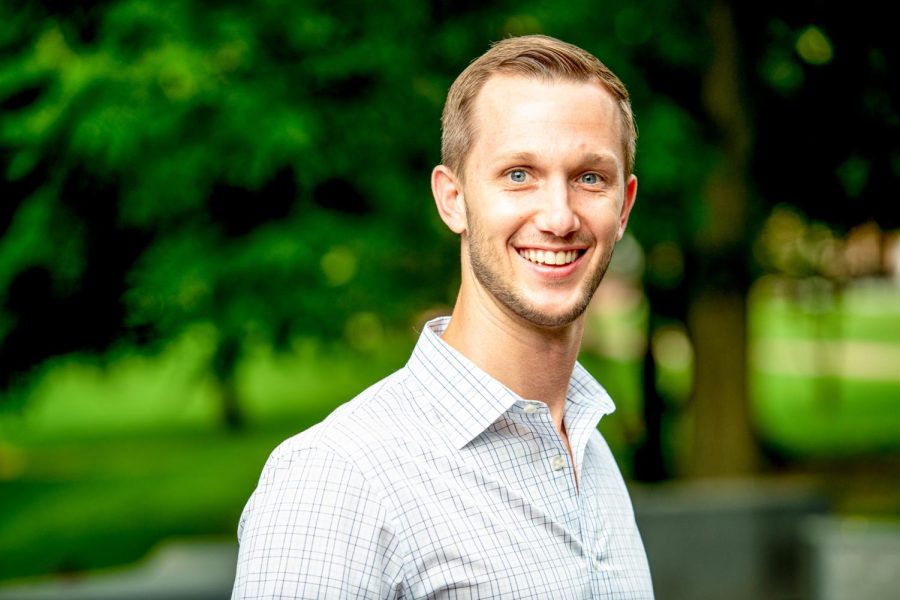Chemistry Professor Michael Bertucci receives $473,000 grant, plans to bring more research opportunities to college
Professor Bertucci is using the National Science Foundation grant to fund research and professorship training at Lafayette College. (Photo courtesy of the Bertucci Group)
February 25, 2022
Chemistry Professor Michael Bertucci has a new job, a new grant and a new opportunity to mentor students and aspiring teachers. Recently, Bertucci received a grant of nearly $500,000 that will be used to further his research taking place at the college.
In January 2021, Bertucci became one of 500 early-career professors to receive the highly competitive National Science Foundation (NSF) Faculty Early Career Development Program award that year. The award was accompanied by a five-year grant totaling $473,000 to be used for research and educational purposes.
“When I got the phone call, it was like I just won the lottery. It was crazy,” Bertucci said.
Bertucci began teaching at Lafayette during the fall 2021 semester after feeling a connection to the school’s research community.
“Undergraduate research in the department is everywhere. It almost feels like it’s a given as something that students will be involved in as early as their first year on campus,” he said. “I think that’s really cool. I think that the environment of Lafayette, not only departmentally, but campus wise, got me excited to come and work here.”
Bertucci is currently conducting three research projects at Lafayette. The NSF grant is funding his research in Lactobacillus plantarum.
Lactobacillus plantarum, which is found in fermented food such as yogurt and pickles, is considered “good” bacteria. It stimulates the digestive system and fights off disease-causing bacteria.
In his lab, Bertucci and his student researchers are examining the process of bacterial quorum sensing in Lactobacillus plantarum. Bacterial quorum sensing allows bacteria to communicate with each other in order to determine how much bacteria is in their environment. This communication is used to affect a change as a group. For example, bacterial quorum sensing allows bacteria to make their host sick.
“I like to use an analogy: sending a text message from your phone. All your friends have phones. You send a message out saying, ‘Hey, you want to get together on Friday?’ They respond and say ‘I’m free,’ ‘I’m not free.’ They let you know that they’re around,” he explained. “It’s the same thing for the bacteria. They send out these chemical signals to sense who’s around in their environment.”
The majority of the grant is for funding students, whom Bertucci calls “the driving force of the research.” These students, who will be paid to continue their research over the summer, are each assigned their own area of the research to focus on.
“We break up small components that all relate to larger project. So each student has their individual research project that they’re working on, which is cool because then they’re leaders of it,” Bertucci said. “I kind of serve as their mentor or consultant as they’re moving through their project. But it really is them who’s in there, running the experiments, analyzing the data. We work as a larger team to make sure they’re moving in the right direction.”
The grant has accelerated the research process significantly.
“It takes time and money to make sure that you can get the experiments done and get them done with the right chemicals and the right personnel,” Bertucci said. “Even though we could have accomplished goals in time without the grant, I think with the grant, it just makes everything much more attainable.”
Additionally, the grant will fund a new opportunity for post-doctoral scholars and graduate students interested in teaching at primarily undergraduate institutions. Accepted participants will spend two weeks on campus paired with a Lafayette faculty member, present research seminars to current Lafayette students and engage in workshops with the college’s Hanson Center for Inclusive STEM Education and the Center for the Integration of Teaching, Learning & Scholarship.
“We’re really hoping that gives them the background to be successful teachers from day one when they show up at their new job, and also make them more competitive for getting professorships,” Bertucci said.
This program’s acceptance rate was about 20% in its inaugural year, a rate that is expected to go down as the program becomes more established. Diverse applicants were chosen based on their interest in teaching, how soon they would enter the job market and how likely they were to benefit from this experience.
“It’s funny—sometimes you apply for something and you think you’ve got to be like, top, top-notch. We wanted to make sure that we were bringing people who maybe didn’t get as much teaching experience,” he said. “We wanted them to be great in their own right already, but we wanted to make sure that when they came to the program that we could help them.”
The program’s goal is not only to shape future professors but establish Lafayette’s chemistry department as molders of future professors.
“What we’re hoping to do is bring good people every year and even get Lafayette chemistry on the map a little bit,” Bertucci said. “The more people nationally who are applying to this program, the more it speaks to our college—that it’s a great place to come and be, and that our chemistry department is not only good at teaching our current students but also good at mentoring the next generation of teachers.”














